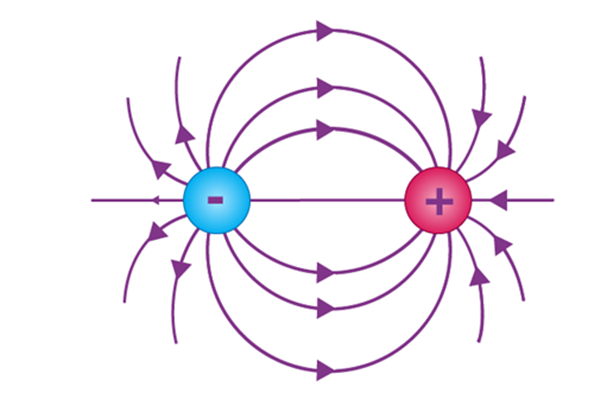An invisible area around a magnetic object is called the magnetic field. The distribution of magnetic force around a magnetic object is essentially described by a magnetic field.
Magnetic Field and Magnetic Force
A magnetic field is created in the area surrounding the conductor when a current flows through it. Prof. H.C. Oersted was the first to show this effect, known as the magnetic effect of electric current. He discovered that a magnetic needle placed close to a conductor carrying electricity is deflected. The needle’s direction of deflection is determined by Ampere’s swimming rule. Magnetic field and magnetic force are related terms. A moving charge’s path around a magnetic object is depicted by the magnetic field. The interaction of magnetic fields produces a force known as the magnetic force. The force can be attractive or repulsive. The nature of the magnetic field surrounding a conductor depends on the geometry of the conductor. In the case of a straight conductor carrying current, the magnetic lines of force in a plane at right angles to the conductor are all concentric circles.
The direction of the magnetic field around a straight conductor is given by the following rules.
Maxwell’s right-hand cork screw rule
If a right-handed corkscrew is turned such that it advances in the direction of the current in the conductor, the direction in which the head of the screw is rotated gives the direction of the magnetic field around the conductor.
Right-hand clasp rule
If the conductor carrying current is clasped with the right hand such that the thumb gives the direction of the current, then the direction in which the other fingers encircle gives the direction of the magnetic field.
Biot- Savart’s (Laplace’s) law
Laplace’s law gives the expression for a magnetic field around a current-carrying conductor. According to the law, the magnetic field at a point is proportional to:
1) The strength of the current through the conductor.
2) The current element’s length.
3) Sine of the angle formed between the current element and the line that connects it to the point.
4) Square of the distance between the element and the point.
Paramagnetic Materials
When exposed to an external magnetic field, every substance responds differently. Most materials can be classified as diamagnetic, paramagnetic, or ferromagnetic. Compared to ferromagnetic materials, paramagnetic materials have lower magnetic susceptibilities. In contrast to diamagnetic materials, the magnetic susceptibility of paramagnetic materials has positive values that are only marginally above zero. They lose their magnetic properties when the source of the magnetic field is taken away, even if they are weakly attracted to an external magnetic field. Magnesium and lithium are a couple of examples of these materials.
The atomic-level characteristics of paramagnetic materials account for their low magnetic susceptibility. Each electron spins on its axis as it circles the nucleus. The electron spin creates the magnetic dipole moment, which is the atom’s source of magnetism. A zero net magnetic moment is created because most materials already have filled orbitals and coupled electrons at every energy level. However, some materials have orbitals with an unpaired electron, which results in the creation of a net magnetic field.
In the absence of an external magnetic field, the orientation of the magnetic dipoles in a paramagnetic substance is random. The majority of magnetic dipoles, however, align with the field in one direction when there is an external magnetic field. Despite the weak magnetic attraction, paramagnetic materials lose their magnetism quickly and completely when the external magnetic field’s source is removed.
Apart from this if you are interested to know more about Pick Out a Gorgeous Leather Jacket for Yourself then visit our Lifestyle category.














